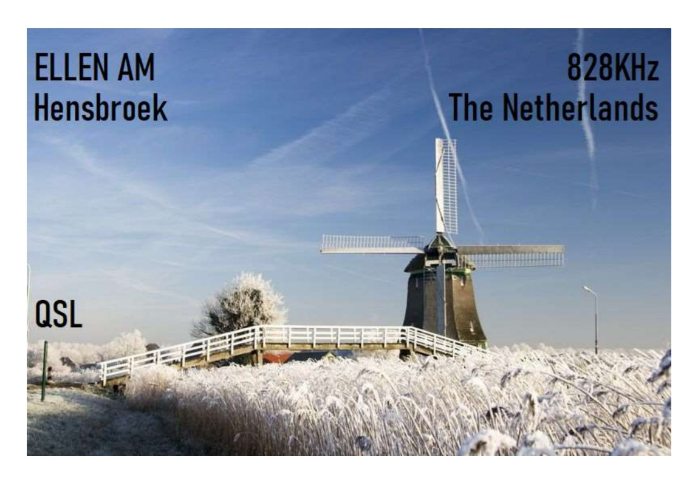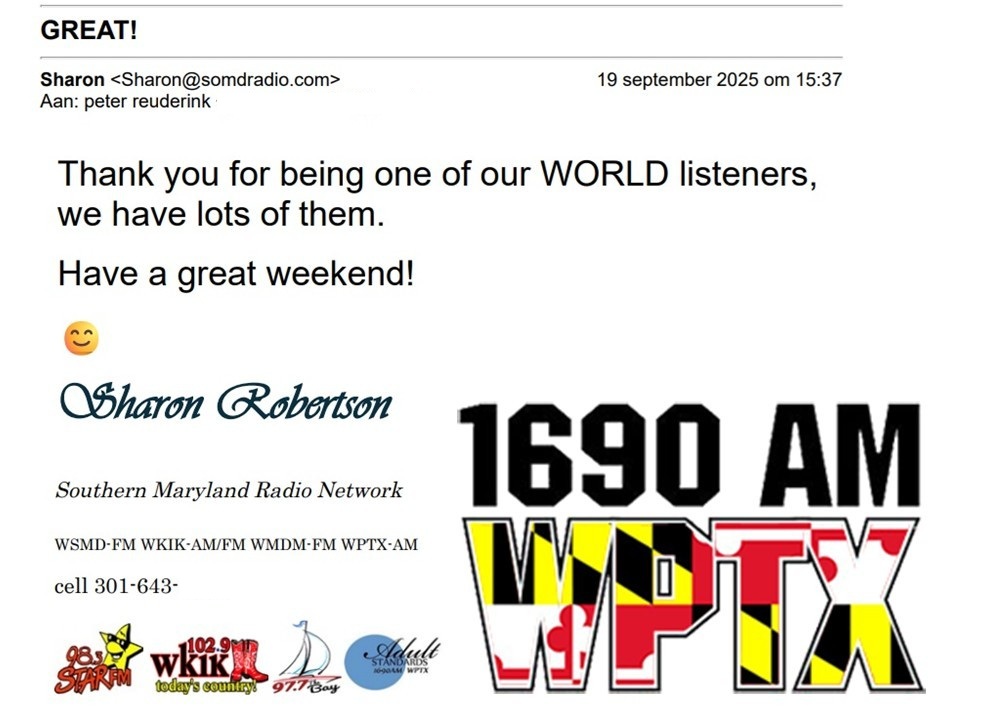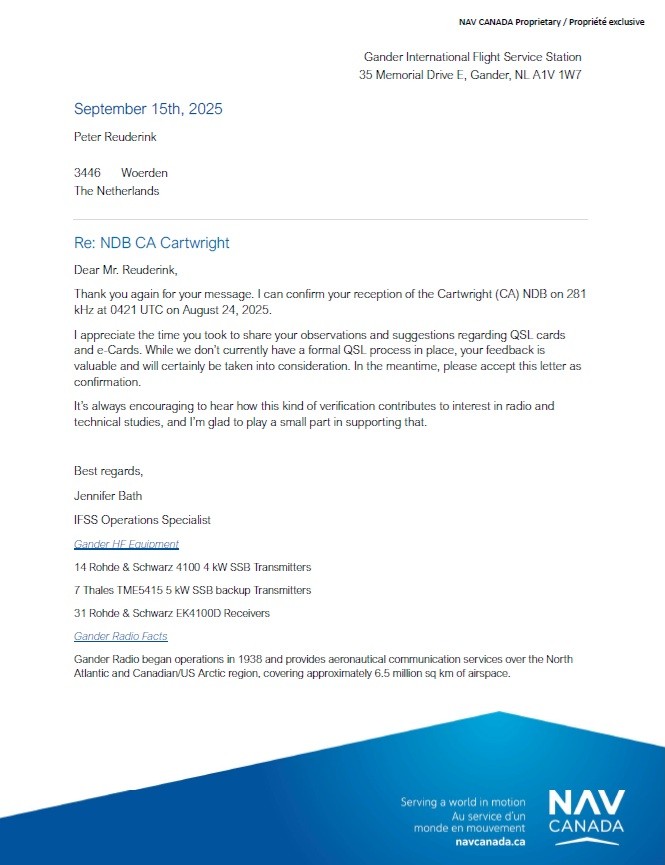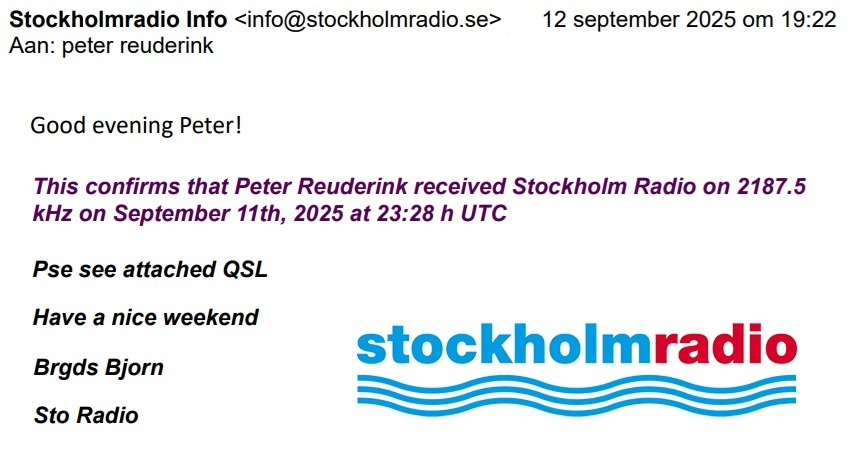A very nice eQSL card from Ellen AM on 828 kHz. Ellen AM is a Low Power AM (100 Watt) station from Hensbroek in the province of North Holland, the Netherlands. Ellen AM is named after Ellen, spouse of Edo. They are the owners but also DJ on the station.
A lot of Dutch stations feature a windmill on their QSL, even if their is no one to be found in the neighbourhood. But Ellen AM is really in the heart of windmill country, and the mill shown on the QSL is the Molen Hensbroek.

Chasing LPAM stations is a nice aspect of the hobby. You might think that my QTH is perfectly located in the centre of the Netherlands (JO22kc). But it also means that on most LPAM frequencies there is one nearby dominant station with little opportunity to benefit from variable conditions to catch one of the other ones. My directional loop helps, but not in this case where Ellen AM is north of me and the more dominant Aktief Tilburg exactly opposite to the south. So I made this reception from Almere, halfway between my QTH and Hensbroek..
Ellen AM started in 2020 with a 1 Watt license. They were surprised that with the right condiitons they were audible over quite a distance. But it also meant that in their service area they were vulnerable to interference during evenings/night. That’s why in 2023 they switched to a 100 Watt license operating on 828 kHz. You can read more about the Ellen AM team on their website.































